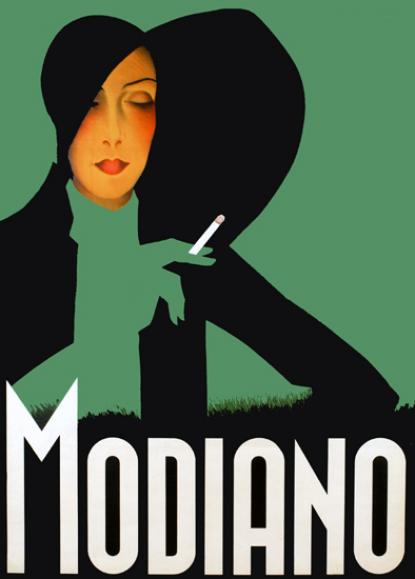2024. April 20. Saturday
Museum and Library of Hungarian Agriculture - Budapest
 |
Address: 1146, Budapest Városliget, Vajdahunyadvár
Phone number: (1) 363-1117
E-mail: info@mmgm.hu
Opening hours: 01.03-31.10.: Tue-Sun 10-17
01.11-28.02.: Tue-Fri 10-16, Sat-Sun 10-17 |
The exhibition has closed for visitors.
2005.06.17. - 2005.08.15.
Museum tickets, service costs:
|
Individual ticket
|
300 HUF
|
|
|
Individual ticket
|
600 HUF
|
|
|
Ticket for adults
|
1600 HUF
|
|
|
Group ticket for adults
|
500 HUF
|
|
|
Ticket for students
|
800 HUF
|
|
|
Ticket for pensioners
|
800 HUF
|
|
|
Individual combined ticket for adults
|
2100 HUF
|
|
|
Individual combined ticket for students
|
1300 HUF
|
|
|
Individual combined ticket for pensioners
|
1300 HUF
|
|
|
Guide for adults
|
5000 HUF
|
/ capita
|
|
Group guide for students
|
3000 HUF
|
|
|
Group guide
|
8000 HUF
|
Before tobacco was widely used in the world, hallucinogens were exploited, plants with narcotic content were smoked to fall in trance at celebrations. The Hungarian folk belief still contained the tradition of smoking in the middle of the 20th century. Smoking was used for several reasons: to prevent trouble, defense from the bad spirits but also to heal.

After the discovery of America, tobacco conquered the world fast. By the 1560's almost all Europe, by the 1600's the Balkans, the Far East and Africa knew and used it. The Englishman Sir Walter Raleigh and the French Portuguese ambassador, Jean Nicot played significant parts in spreading tobacco in Europe. The plant Nicotiana Tabacum received its name after the latter, Linné, the scientist.
Tobacco first was grown in monastery gardens as an herb. It was very significant in contemporary medicine and was used frequently in pest and cholera epidemics since it stopped the spreading of the diseases.
The wars in 1618-48 played significant role in spreading and developing the costume of smoking. Pipes were made of diverse materials: pearl, porcelain, tile, bamboos, but the nicest ones were engraved of wood. In Hungary, the most important town of pipe manufacture was Debrecen. Its heydays were in the 18-19 centuries when over 30 types of pipes were made.
Smoking cigars spread at the time of the war of Napoleon at the end of the 18th century in Europe and from the 1840 in Hungary. With cigars new types of tobacco arrived.
Smoking cigarettes became popular in the 1820 at the time of the war of the Crim in Europe and at the Civil War in America. American Indians had known tobacco before which they smoke in corn leaf. From the 1900's tobacco factories spread fast and flood the world with their products. The discovery of matches made with sulphur furthered the spreading of smoking. WWI and WWII brought on the comlpete victory of cigarettes that became the symbol of friendship of men.
We show the tools and equipments belonging to the tradition of smoking. The different ways of smoking mirrored the social class of the smoker.
Our exhibition does not intend to propagate smoking but to show its history, the phenomena important from the point of view of universal history of culture, as well as its economic and social significance.
Korkes Zsuzsa, the organizer of the exhibition

After the discovery of America, tobacco conquered the world fast. By the 1560's almost all Europe, by the 1600's the Balkans, the Far East and Africa knew and used it. The Englishman Sir Walter Raleigh and the French Portuguese ambassador, Jean Nicot played significant parts in spreading tobacco in Europe. The plant Nicotiana Tabacum received its name after the latter, Linné, the scientist.
Tobacco first was grown in monastery gardens as an herb. It was very significant in contemporary medicine and was used frequently in pest and cholera epidemics since it stopped the spreading of the diseases.
The wars in 1618-48 played significant role in spreading and developing the costume of smoking. Pipes were made of diverse materials: pearl, porcelain, tile, bamboos, but the nicest ones were engraved of wood. In Hungary, the most important town of pipe manufacture was Debrecen. Its heydays were in the 18-19 centuries when over 30 types of pipes were made.
Smoking cigars spread at the time of the war of Napoleon at the end of the 18th century in Europe and from the 1840 in Hungary. With cigars new types of tobacco arrived.
Smoking cigarettes became popular in the 1820 at the time of the war of the Crim in Europe and at the Civil War in America. American Indians had known tobacco before which they smoke in corn leaf. From the 1900's tobacco factories spread fast and flood the world with their products. The discovery of matches made with sulphur furthered the spreading of smoking. WWI and WWII brought on the comlpete victory of cigarettes that became the symbol of friendship of men.
We show the tools and equipments belonging to the tradition of smoking. The different ways of smoking mirrored the social class of the smoker.
Our exhibition does not intend to propagate smoking but to show its history, the phenomena important from the point of view of universal history of culture, as well as its economic and social significance.
Korkes Zsuzsa, the organizer of the exhibition
